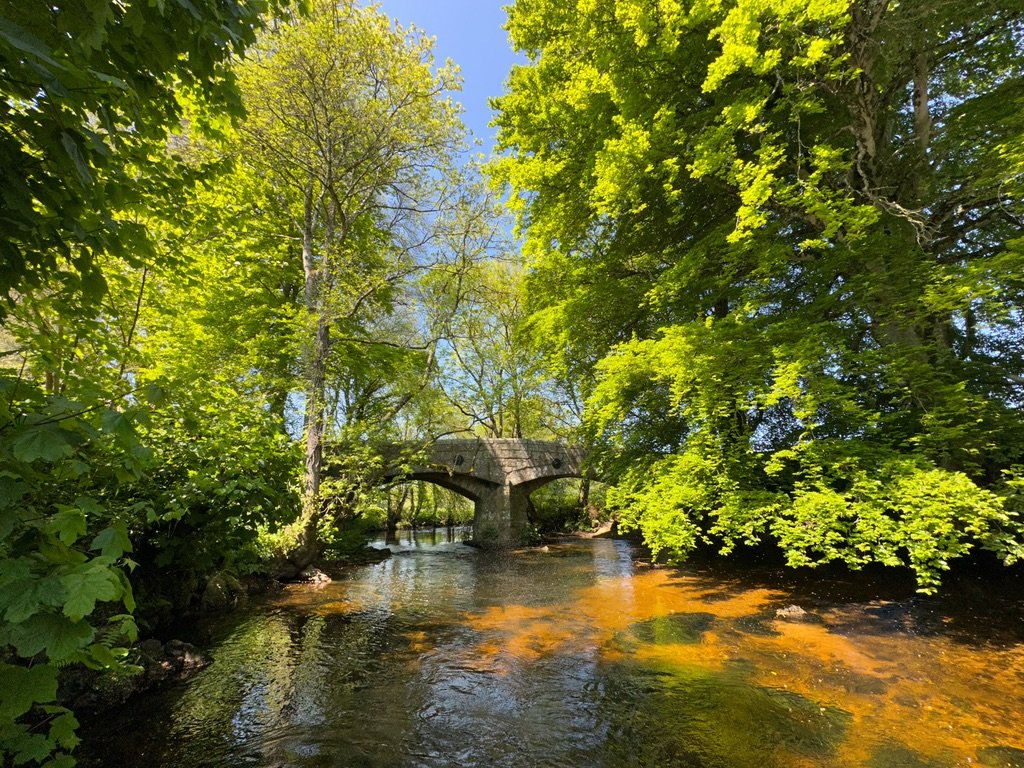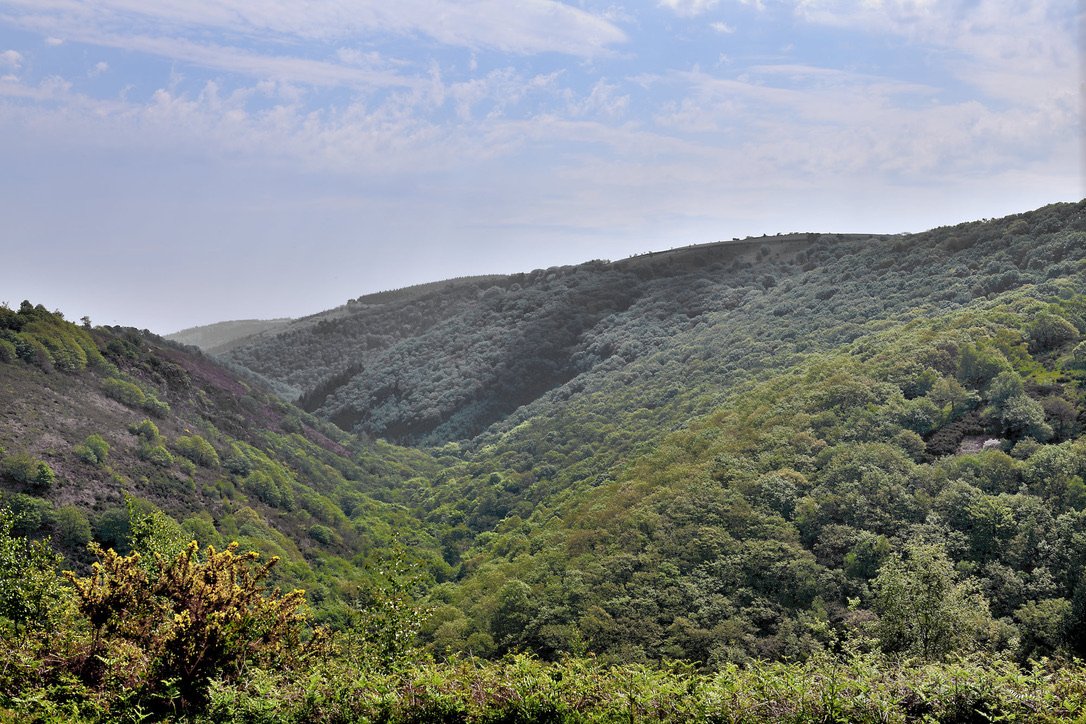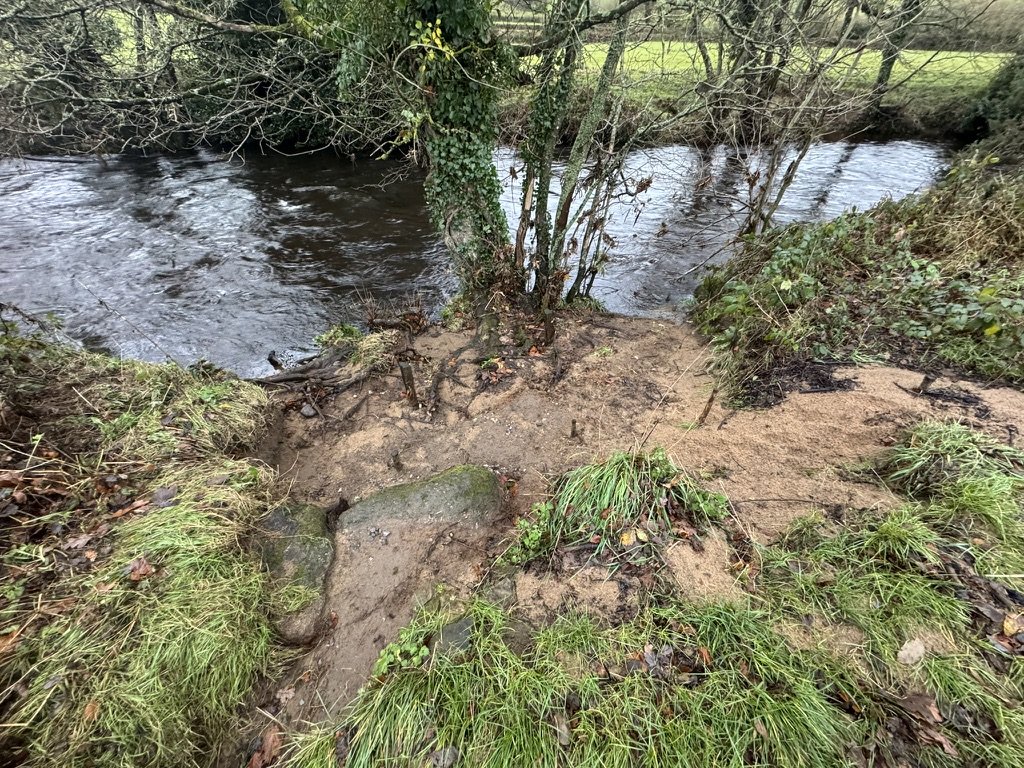Seeing the light
With the hours of daylight beginning to draw out, the signs of spring are definitely in the air. What better motive to introduce the concept and role that Dappled Shade and Sunlight play in maintaining a healthy river habitat for wild fish.
Rivers are dynamic ecosystems, and maintaining their health is critical for the survival of wildlife, including wild fish species. The River Teign, as we know, is home to a diverse range of aquatic life that supports a food chain that extends way beyond the surface of the water.
The river’s overall health is influenced by various natural and environmental factors, with shade and sunlight playing an essential role in creating a balanced habitat for fish and other wildlife. Specifically, a mix of both dappled shade and direct sunlight is crucial for preserving the river’s biodiversity and ensuring that wild fish populations continue to thrive.
Understanding Dappled Shade
Dappled shade is a term used to describe the filtered light that penetrates the forest or tree canopy above a river, creating a mixed pattern of light and dark areas that extend through the water to the riverbed. This form of shade is produced by trees, shrubs, and vegetation lining the banks of the river. It differs from complete shade, where no light reaches the water, and full sunlight, where the river is exposed to direct sunlight for extended periods.
The Wild Trout Trust does amazing work in habitat and river restoration and are firm advocates of dappled shade in a river. They are a fine organisation and do so much in support of healthy rivers for wild trout to survive sp please check them out and join if you can. They also hold an annual auction to raise money and awareness where, if successful in your bid, you can find access to some amazing fishing whilst supporting a great cause!
As we know, the Upper reaches of the Teign flow through Fingle Gorge and for the most part, the river in this section is completely covered by a canopy of trees. Here dappled shade plays a critical role in helping to regulate water temperature, promoting habitat diversity, and sustaining aquatic life. And, here’s the how bit!
The Fingle Gorge viewed from the Hunter’s Path. At the bottom of this tree-lined valley flows the River Teign
Temperature Regulation
One of the most crucial roles of dappled shade is its ability to moderate water temperature and reduce the warming of water from solar radiation (heat from the sun). Wild fish, especially the salmonoids (Trout, Sea Trout and Salmon), are sensitive to temperature fluctuations. Water temperatures above 18°C can lead to stress, reduced oxygen levels, and even mortality in extreme cases.
The combination of shaded and sunny spots along the river ensures that the water remains within an optimal temperature range. During the warmer months, dappled shade helps cool the water by blocking excessive sunlight, while areas exposed to sunlight help prevent the water from becoming too cold in the winter months. This natural thermal regulation is vital for maintaining healthy fish populations. The water temperature continues to play a crucial role in the growth and survival of eggs of our beloved migratory species, the Atlantic Salmon.
Once spawning has occurred in late Autumn, 12°C is heralded as a magic number and more worryingly a cliff edge. This is because mortality and deformity rates increase markedly in salmon eggs above this temperature.
A hen salmon preparing her redd above Chagford Bridge 2021
Going back in time a little, part of our involvement in the River Teign Restoration Project was monitoring water temperature throughout the Teign catchment. Through this data capture, we were able to confirm through our data that the water temperature did not exceed 12°C during the three months after spawning (roughly the time taken for the eggs to hatch) allowing us to be optimistic about these particular eggs hatching into young alevin to embark upon their epic journey.
Chart highlighting the 3-month window after spawning observation at Chagford Bridge against water temperature
Supporting Aquatic Plantlife
Dappled shade encourages the growth of certain aquatic plants, which provide essential food, shelter, and oxygen for wild fish. These plants, including weeds, such as ranunculus, reeds, and submerged grasses, thrive in areas where light is filtered rather than intense and direct. The combination of sunlight and shade creates a variety of microhabitats, each supporting different plant species that contribute to overall biodiversity and further help support the river’s food chain.
Weed growth thriving in the Upper Teign thanks to our good friend - Dappled Shade!
Furthermore, the root system of these plants helps to stabilise the riverbed, reduce erosion, and filter out any sediment and pollutants. They really are the filters of the river. Additionally, this vegetation provides a refuge for fish, offering hiding places for juvenile fish from predators and shelter for spawning fish.
Enhancing Invertebrate Population
Invertebrates are a key food source for wild fish. The presence of dappled shade can foster a variety of aquatic insects and invertebrates, such as caddisflies, olives, stoneflies and water beetles. These organisms rely on specific environmental conditions, including water temperature, light levels, and vegetation. Dappled shade and a variety of different light levels help create the ideal conditions for these invertebrates to thrive, providing an important food source for juvenile fish and supporting the growth of wild fish populations. The fact that we are lucky enough to watch Dippers and Kingfishers on this river all starts from the riverbed and the food chain it bears life to.
A Flat Bodied Stone Clinger - taken from a Riverfly kick sample on the Teign
The balance between Shade & Sunlight - A Delicate Ecosystem
Maintaining areas of both shade and sunlight along any river is crucial for the overall health of a river’s ecosystem. Too much shade can reduce the growth of aquatic plants, lower invertebrate populations, and create a monotonous habitat that lacks the necessary diversity for fish species. On the other hand, excessive sunlight can lead to overheating of the water and diminished oxygen levels, which can stress, or if extreme, kill fish.
The key, as always with rivers, is balance. By ensuring that some areas of the river are shaded and others receive full sunlight, the river provides a wide range of environmental conditions that cater to the needs of various aquatic species throughout their life cycles. This diverse environment supports our beloved salmonoids, from those that prefer cooler, shaded waters (think Sea Trout holding in the river) to those that thrive in the warmer, sunlit parts of the river (think Wild Brown Trout).
Link the balance of needing both light and shade with the benefits of Woody Debris in a river and hopefully, you can appreciate how we can sustainably and sensitively manage these key pillars for overall river health. For those of you involved with the River Teign Restoration Project volunteers and our project partners ran a number of habitat improvement days within the catchment where light coppicing took place to open up windows within the tree canopy to promote more light on the water. Any selected trees/shrubs were then repurposed as either live or dead hedges to help restore sections of river banks.
Works on the Bovey at Parke - November 2024
The Teign - A Model for Habitat Conservation
Through our data collection in terms of Fish Surveys and Riverfly (ripple of applause to the volunteers of course!), it is clear that the Teign has a rich biodiversity and is an example of how maintaining a balance of dappled shade and sunlight is essential for a thriving river habitat.
Further conservation efforts along the Teign have focused on replanting and preserving riparian vegetation (the plants along the riverbanks) and better managing natural tree cover. These measures not only provide shade for temperature control but also improve water quality by filtering runoff and reducing erosion. Remember, where there are no trees, there are no roots stabilising the river bank. In these instances, it’s not uncommon to see these banks swiftly erode during river spates, with soils and silts being washed away into the watercourse.
An example of tree roots holding a section of bank together following a spate - This would be an ideal location to carry out further restoration work to protect this bank with part of the solution being course woody debris to protect this stretch of riverbank.
It is also best practice to encourage responsible land use and the preservation of riparian zones to ensure that future generations of wild fish have access to suitable habitats. By prioritising the importance of dappled shade, sunlight, and a diverse range of habitats, we are all helping to protect the delicate ecological balance necessary for the survival and abundance of wild fish in the river.
Conclusion
I think if there’s one thing to take away from this, then maintaining a healthy and balanced river ecosystem is a complex task that requires attention to various factors, from water quality to habitat availability.
For wild fish populations in the Teign catchment to thrive, a mix of dappled shade and sunlight is vital to regulate water temperature, support plant and invertebrate life, and create a dynamic habitat that sustains fish throughout their life cycles.
Through continued conservation efforts and a deeper understanding of the relationship between shade, sunlight, and river health, we can help ensure that the Teign catchment remains a sanctuary for wild fish and a thriving natural environment for years to come.








